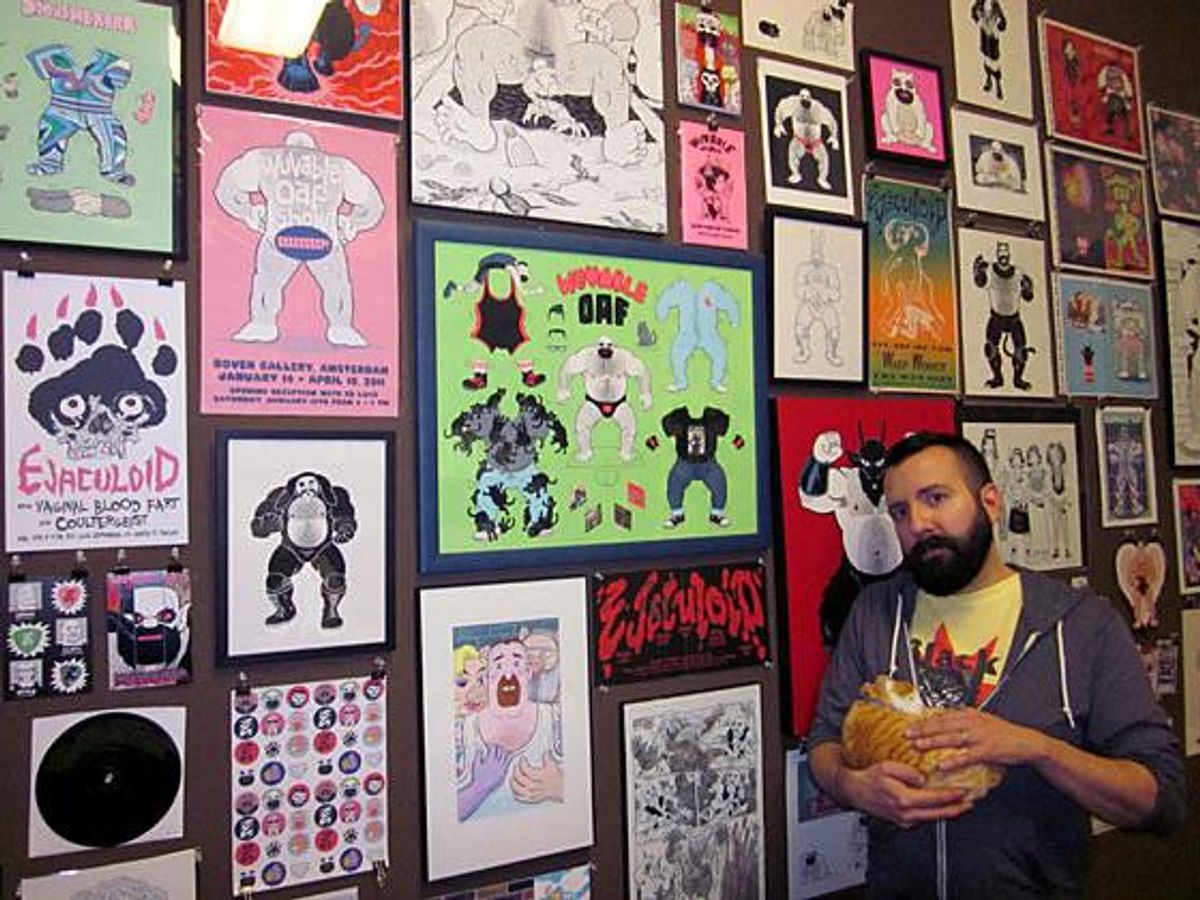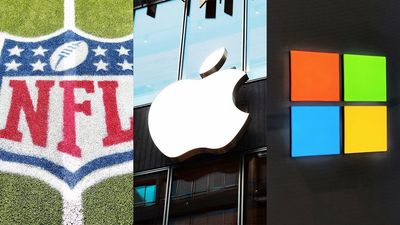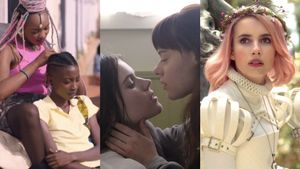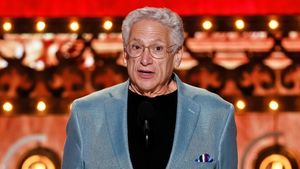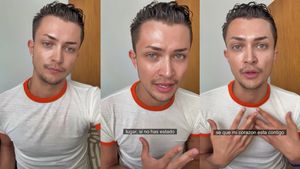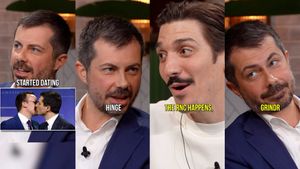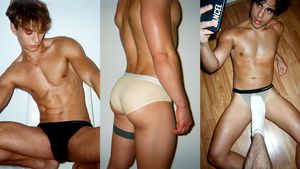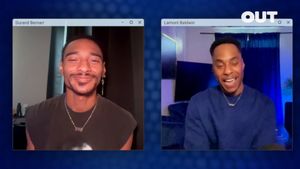Ed Luce is an artist and writer from San Francisco who self-publishes the indie comic sensation Wuvable Oaf along with a line of related shirts and merchandise. Often referred to as the "Scott Pilgrim of gay comics," the story revolves around a large, scary-looking guy searching for love, his rather complicated relationship with cats, and his devotion to all sorts of good music. Along the way, readers meet a couple of warring queer rock bands and the Oaf's lovable cast of misfit friends, which includes pro wrestlers and cult celebrity guest stars.
Luce is also well-known for his comic's unusual special edition versions, which have included everything from lollipops to scratch-and-sniff trading cards to seven-inch vinyl record singles (featuring collaborations between legendary Bay Area bands Limp Wrist and Talk Is Poison).
Currently, Luce has two exhibitions of Oaf art running on the West Coast: One at Goteblud, a vintage zine store in San Francisco's Mission district, and one at Floating World Comics in Portland, Ore. Over the next few months, Oaf will also be taking part in the San Francisco Zine Fest (September 3-4), the Alternative Press Expo (also in San Francisco, October 1 2) and the New York Art Book Fair at MoMA PS1 (represented by Matt Wobensmith, September 30-October 2).
For more information on these events and to shop for all things Oaf, visit WuvableOaf.com.
The Advocate: How do you choose your subjects?
Ed Luce: Several of my characters are based on real-life friends and acquaintances. Some people just lend themselves to caricature, including myself. Oaf and his love interest, Eiffel, are definitely aspects of my personality. Oaf is how I view myself on the inside; Eiffel is more my physical body type, plus some of my less charming traits. Lil' Papa, Oaf's adoptive father, is my partner, Mark, and Smusherrrrr is my best friend and collaborator, Matt. Working them into the story makes me feel that much more invested in these characters and I feel that love comes across in the drawing and storytelling. It's something you just can't fake.
How was the Wuvable Oaf born?
I was invited to take part in a paper doll theme show, so I decided to take a slightly more conceptual approach and craft a scary-looking guy whose clothes betrayed his true nature. The outfits were fuzzy footsie pajamas, a sweat suit with black kittens clinging to it, a Smiths "Meat Is Murder" shirt, and the accessories were Smurf and Chipmunks records. People wanted to know more about this character ... where was he from, what his story was ... and a comic seemed to be the best way to explore that. I had been a lifelong comics reader (mainly DC and Marvel superhero titles) but never had much experience in telling that kind of sequential narrative. In fact, I had been a painter and art professor for nearly 10 years. So I set about dreaming up his history and extended cast of characters ... the rest evolved from there.
How do folks react to the Oaf?
I think by and large they giggle at first, particularly if they're seeing the undies image for the first time. If they aren't scared away, then there's a curiosity. At comic conventions, I'm a big fan of letting people who are attracted to the covers come up and experience the book on their own terms, rather than resorting to a spiel. Inevitably, this means all sorts of folks take a peek, including people I'd presume to be straight. I think everyone has an Oaf in their lives, be it partner, brother, father, friend, or coworker. While the perspective is gay, I don't think my storytelling excludes any one group from enjoying the comic, so we get a lot of crossover readers. I've started calling it "the gay comic for everyone else," somewhat jokingly. My gay fans totally get the characters and where they're coming from, but I like to think the stories are inclusive. It's essentially a love story, as much about finding someone as finding oneself. And that theme resonates for everybody, regardless of gender and sexuality.
What artists do you take inspiration from and why?
Believe it or not, I'm relatively new to indie comics, so some of my influences tend to be a little outside the genre. I'm a huge fan of 19th-century illustrator Aubrey Beardsley for his use of bold black-and-white shapes with moments of intense detail and texture. I enjoy his very playful sense of perversity and choice of subject matter. I'm also very into illustrator and printmaker Rockwell Kent, whose Moby Dick drawings I find both dynamic and iconic.
I've become very drawn to the comics work of the Hernandez Brothers (particularly Gilberto), Osamu Tezuka, Tom Neely, Johnny Ryan, Bryan Lee O'Malley, and Chuck BB. I admire what each of these artists is able to accomplish with pretty straightforward black-and-white drawing.
